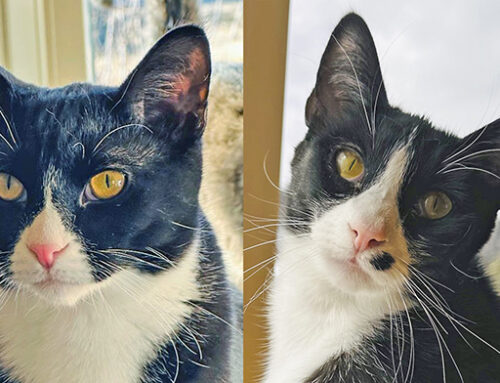Last month a beloved Utah K9 named Storm died due to complications from ingestion of a weed. Not the cannabis kind (which can also be deadly to your dog) but form the simple foxtail – a weed that is prevalent in this region. Read below for tips on reducing the risks to your dog from this unfriendly grass-like plant.
The reason foxtail plants can be risky for your dog is due to the barbed seed heads of the foxtail plant which can work their way into any part of your dog or cat, from the nose to between the toes and inside the ears, eyes, and mouth. They can even simply dig themselves directly into a patch of skin.
The danger of foxtails goes beyond simple irritation. Because these tough seeds don’t break down inside the body, an embedded foxtail can lead to serious infection and death for your dog if left untreated. The seeds can be hard to find in your dog’s fur.
Foxtails travel. Moving relentlessly forward, never back, they can migrate from inside your dog’s nose to its brain. They can dig through skin or be inhaled into, and then perforate, a lung. They can cause discharge, abscesses, swelling, pain, and, as noted above, death. If your dog is displaying any of the following symptoms, check for foxtails or talk to your vet:
Foxtails love your dog’s feet and can easily become embedded between tender toes. Check for foxtails if you notice swelling or limping or if your dog is constantly licking the area.
If your pooch is shaking his head, tilting it to the side, or scratching incessantly at an ear, this could be the sign of a foxtail — one that may be so deep inside the ear canal to see. Your veterinarian needs to take a look using a special scope.
Redness, discharge, swelling, squinting, and pawing of the eyes all may be signs your dog has a foxtail lodged in it, also requiring veterinary care immediately.
If you see discharge from the nose, or if your dog is sneezing frequently and intensely, there may be a foxtail lodged in a nasal passage. And unfortunately foxtails can find their way into the genital area as well. So if you notice your dog persistently licking at its genitals, foxtails could be the cause.
Bottom line is that foxtails are bad for pets, and although hard to avoid, keeping a close eye on your pet can prevent serious foxtail-related health issues.
And now my favorite part of the weekly Pet Column – the Pet of the Week profile! My name Princess and I am a spectacular three year-old hound and Catahoula mix with brindle coloring. I arrived at Second Chance with my friend Karma after our person owner passed away.
It was a tough adjustment for me but with the help of staff, volunteers and new furry friends I am beginning to find comfort in my temporary home but I really need a new family and home. I adore affection and cuddles as well as play time with other dogs and nice walks with my human friends. Come meet Karma and I today!
Second Chance Humane Society Animal Resource Center and Thrift Shops service San Miguel, Ouray & Montrose Counties. Call the SCHS Helpline at 626-2273 to report a lost pet, learn about adopting a homeless pet, or about the SCHS Spay/Neuter, Volunteer, Feral Cat, or other Programs. View our shelter pets and services online: www.adoptmountainpets.org.







Leave A Comment